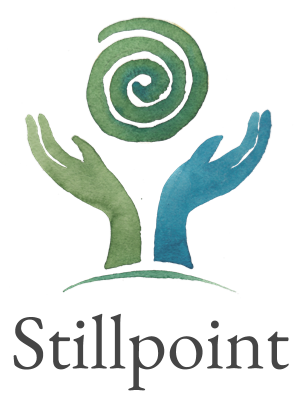Sound Listening
By Rev. Elizabeth Rechter, Executive Director
There is a contemplative exercise you may know. It is called a sound meditation. You close your eyes for a little while and listen to all the sounds that come to your ears. While listening, you try not to label what you hear, but simply to let the sounds be. Take a moment and try it.
“You might think of the difference between radar that goes out looking for something and a satellite dish with a wide range of pickup capacity that just sits in the backyard, waiting. Be a satellite dish. Stay turned on, but just wait.”
It’s not so easy. I find it an almost-involuntary response to hear a chirp and think bird. Or go to irritation with the sound of the air conditioner. Or wonder where the fire engine is headed. We are so accustomed to attaching knowing with what we hear. Perhaps it steadies us, but can we sometimes take a breather from this?
What is to just listen and not label?
Experiencing this mediation recently reminded me of a similar experience when visiting Ecuador and staying with a pastor and her family for several weeks. This kind of visit allows the greatest amount of contact with the people. Because I did not know the language, their words reached me, but simply as sounds.
As I sat next to a mother and her daughter on a bus, I didn’t try to decide whether the mother’s question was too intrusive, or if the daughter’s tone was respectful. I just heard the sound—the sound of them. People talking together were simply pictures of human relationships.
One day, as I sat among these different harmonies of sound, it occurred to me how restful it was. I realized, while I was in the company of people, I was having a vacation from my own stream of interpretations.
Meditation is a way to take such a trip. Thomas Keating has described Centering Prayer as taking a vacation from yourself. We let go of our thoughts and return to the Presence. By letting each of the thoughts go, we free ourselves, even if only for a moment, from them and their hold on us. For this small space of time, we move, little by little, away from all the labels.
What is the sound of me without all the labels? Do I even know that person?
A Buddhist teacher told me that what we can hope for is a longer space between thoughts, a pause between sound and label.
Meditation practice, sound meditation, helps us go out into the world in peace. It is the exercise that keeps us in shape for the work of companioning. It is the definition of companioning: to go alongside, listening to the sound of being human and the sound of Spirit without adding any labels.
I try to bring this sound listening to my practice of companioning others on their spiritual journeys, but I also desire to take it into widening circles.
For instance, when people take a knee at the beginning of an NFL football game, I try to listen for the sound of that. Or what sound do I hear when I encounter the mile of tents of the homeless ones along the freeway?
Just hearing the sound of our humanity—before the analysis, the judgement, the figuring it out, the label—allows us something else: To be present. And to return to the Presence on our journey, again and again and again.
Blessings for the Journey,
Elizabeth+
Rev. Elizabeth I. Rechter
Executive Director, Stillpoint


